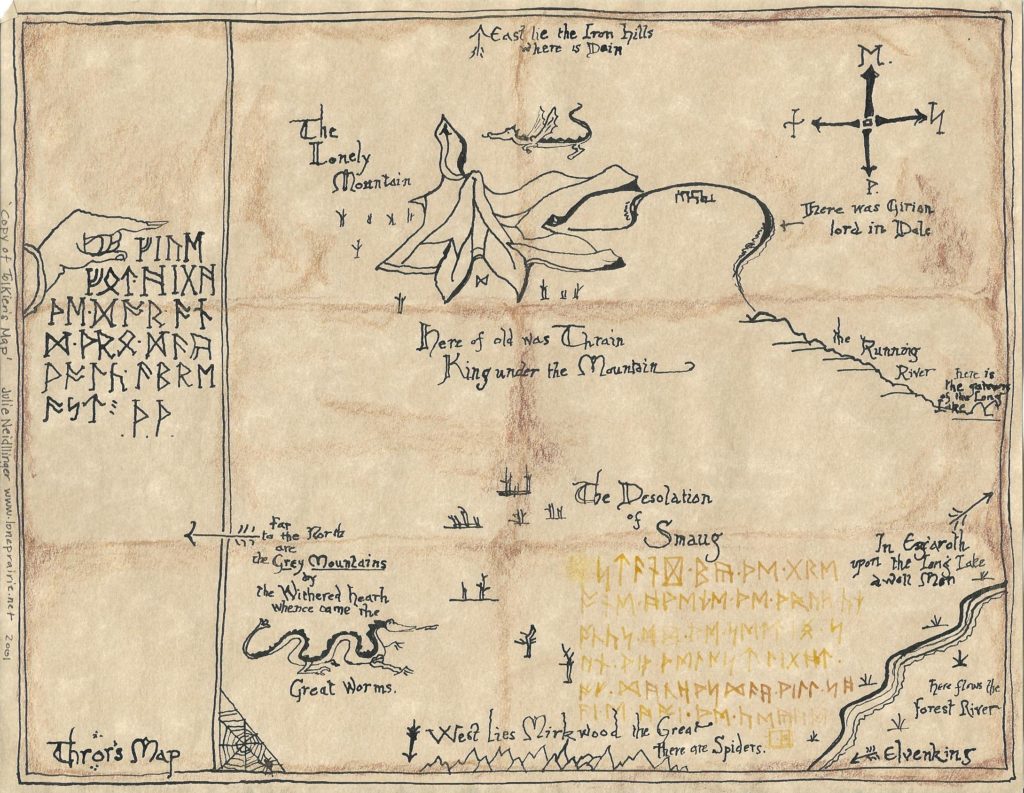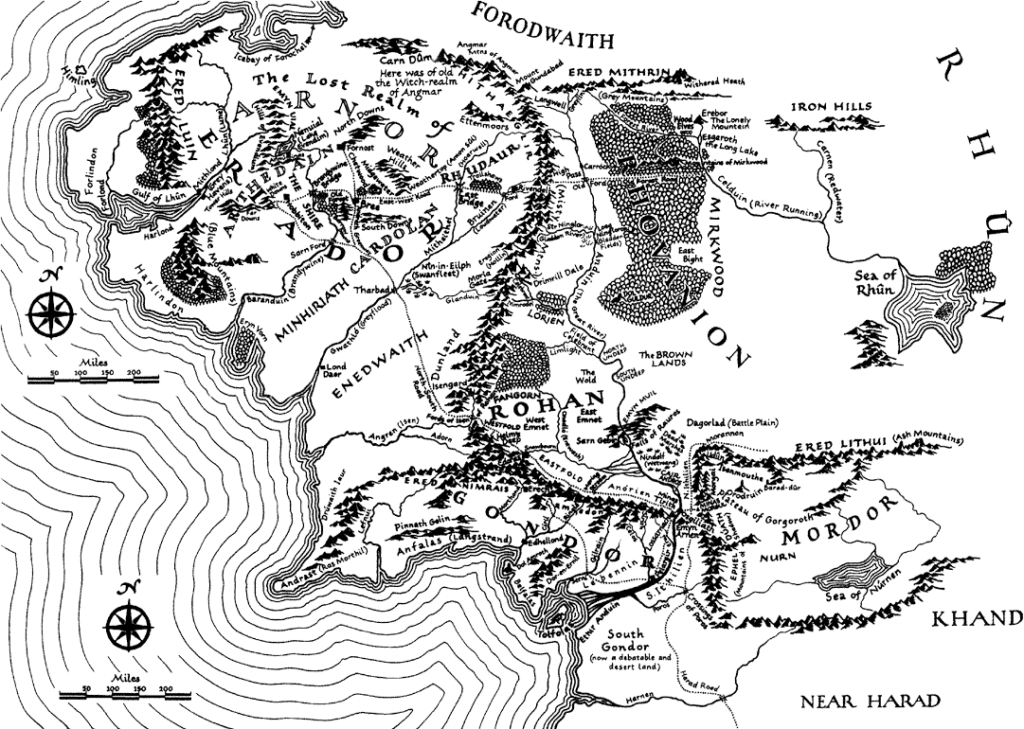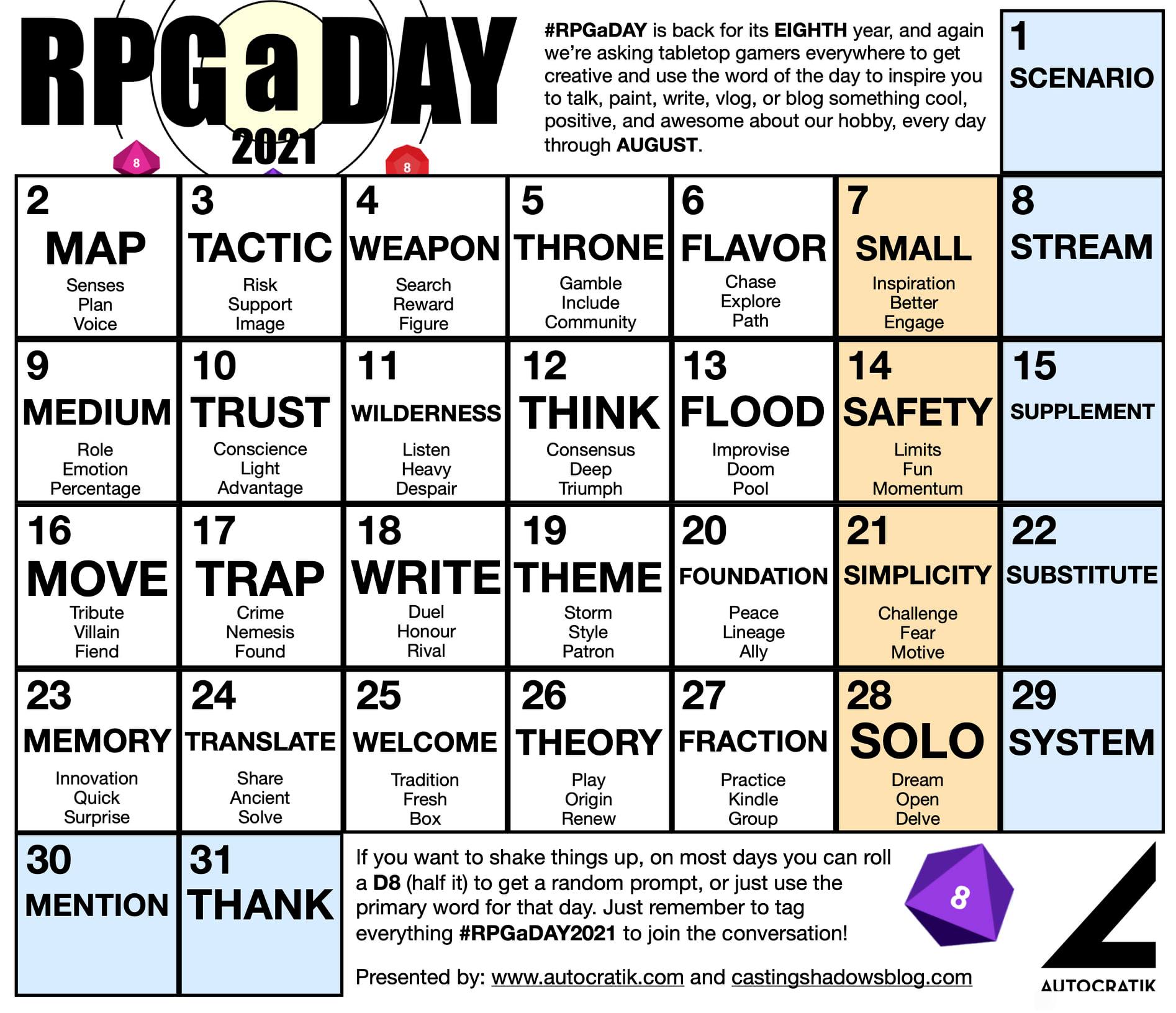It was the best of maps; it was the worst of maps. They were a pair of maps in a set of books that would hugely influence the roleplaying hobby, one for better and the other for the worse.
The maps in question appear at the openings of the first two narratives published of Professor Tolkien’s Middle Earth. The treasure map of Thrór, held by Thorin from The Hobbit, is the first. The second is the map of Middle Earth, a world map, at the beginning of The Fellowship of the Ring.

Make no mistake about Thorin’s map. It is a treasure map as sure as the one Billy Bones has in Treasure Island or, going back even further, the maps to a seal hunter’s parasite in The Sea Lions by James Fenimore Cooper. While many of its literary relatives reveal hidden treasure, Thorin’s map shows a hidden way to a known but lost treasure. The quest to retrieve the treasure and what it represents, the Kingship under the Mountain, drives the plot of the novel.
This sort of map serves a story as a primary element. It can guide the main characters, leading them to some valuable goal or just a MacGuffin. The map itself can be a MacGuffin that drives the action of the main characters or the antagonists. It can serve the same purposes in roleplaying games, being sought and obtained in its own right or something that falls into the character’s hands, spurring adventure.
Treasure maps have a long history in the roleplaying game going back to the first version of Dungeons & Dragons. The original version of the game had maps on its treasure tables, leading to treasure, magic, or both. Advanced Dungeons & Dragons continued to have maps and even added a chance for them to be fake. Sadly, the second edition of AD&D dropped maps from the treasure tables.
This change in the second edition of AD&D reflected changes in the game. The style of play of open tables and sandbox campaigns that characterized many games of the 70s were very friendly to the treasure map. Rolling one on random tables would spur the DM to develop something new in the world for its destination. Getting there could provide weeks of adventure. In such an environment, the world map was more useful. By the mid-70s, the “well-developed campaign,” as Mark Cummings declared it in The Space Gamer 18, had become more common, perhaps even coming to dominate the *D&D* scene.

The world map described the world of the campaign, giving more context and depth to the adventures. In the wake of Dragonlance, more and more game was grand world-saving quests in the vein of those books and The Lord of the Rings and its imitators. You can’t save the world without a world to save. A map is a great way to present the world.
The problem with so many maps, both in D&D and fantasy novels, is they were created before, or at the beginning, of the world in question. Contrast that compressed history to that of the map at the beginning of The Lord of the Rings. Tolkien’s first works that would lead to Middle Earth were written in late 1916 or early 1917, in the midst of The Great War. The oldest known map of Middle Earth, of Beleriand, probably dates from 1926 to 1930 when his ‘Sketch of the Mythology, the first version of The Silmarillion, was composed. In between, over a dozen tales were written or outlined, and two epic poems of material were written. It would be over two more decades before the map of *The Lord of the Rings* would appear. Like so many other aspects, the accretion of details behind the map and its history added to the depth and power of Middle Earth.
You can contend that forty years of creation is too much to expect of a GM or working author who has to pay the bills, but the great maps of fantasy often have similar geneses. Glorantha was begun the year I was born, in the mid-60s, but the earliest shared maps of the world, of Dragon Pass in White Bear, Red Moon, and Prax in Nomad Gods, appeared roughly a decade later in the mid and late 70s. Ed Greenwood started the tales of the Forgotten Realms before D&D was published. We got the first box set in the late 80s, meaning at least a decade and a half passed.
When trying to cram a world map into a season or even a year, there is no time for the growth, drift, addition, and subtraction that makes these world maps, and their worlds, great. It is one thing to throw together Treasure Island over the week between games. It is quite another to create a deep world map, which implies the world that supplies the depth.
I have nothing against world maps, but perhaps if we encouraged DMs to build their world map one treasure map at a time, which will require all the places in between the treasures, they could both be the best of maps.


Be First to Comment